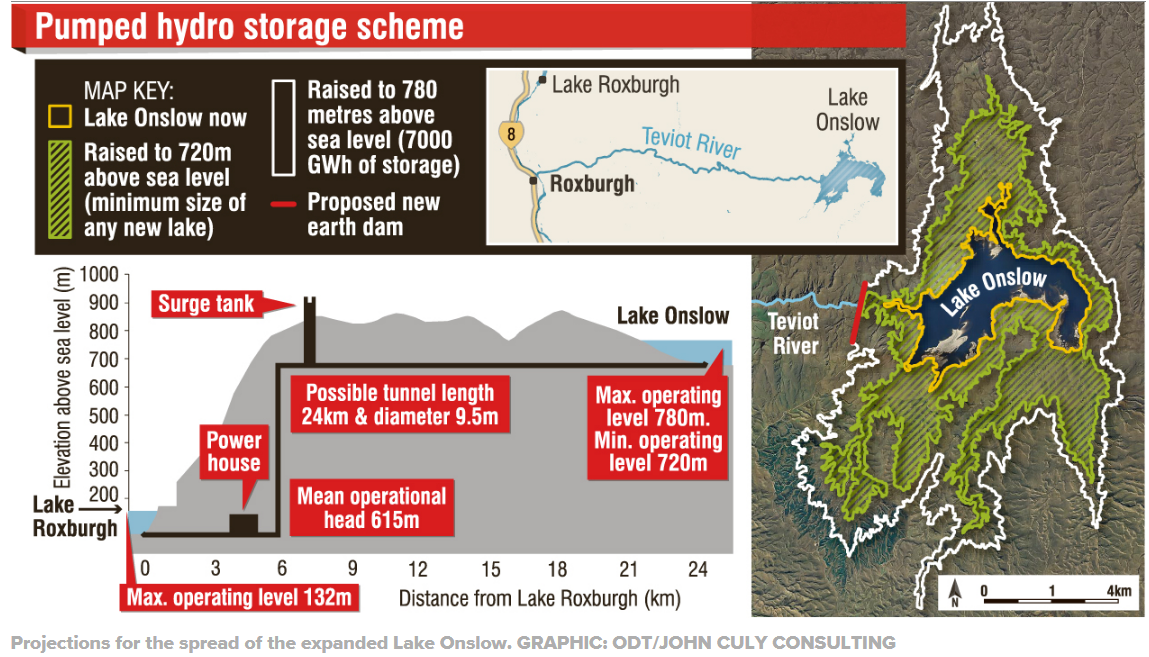NZ Battery Dry year problem
The dry year problem is every electricity consumer’s problem.
Production monopolies and cartels benefit from a shortage of supply. More than 95% of NZ electricity is produced by 5 companies, 3 of those companies are 51% owned by the NZ government. Transpower which is government owned controls the power distribution and owns ‘the national grid’
"https://en.wikipedia.org/wiki/Meridian_Energy#Controversy" and the possible rorting of the Tiwai aluminium smelter via lines charges.
Energy is an essential part of modern day life and economy. Movement to Zero Carbon reduces the economic alternatives to electrical energy, which puts the electricity industry in a very strong position.
Renewable sources of electricity currently are not very elastic and susceptible to events beyond our control.
The greatest of these uncontrollable events recognized by the government is “the dry year” when hydro electric generation has to be reduced due to low water levels. However in the future, when wind and solar become significant sources of electrical power, there will be other events like calm wind free periods and cloudy months that will also impact renewable generation.
At present Fossil Fuel provides the backstop that secures continuity of supply, with natural gas turbogenerators taking up the slack and the strategic stockpile of coal at Huntly and nearby for the coal powered station as the final resort.
Stockpiling energy in the form of coal is the cheapest and simplest method for long term energy security. However this is incompatible with New Zealand’s professed aim of carbon neutrality.
NZ Battery Project
"https://www.mbie.govt.nz/building-and-energy/energy-and-natural-resources/low-emissions-economy/nz-battery/"
is focused on the feasibility of pumped storage at Lake Onslow
"http://hydrologynz.co.nz/downloads/20070417-021706-JoHNZ_2005_v44_2_Bardsley.pdf"

and other alternatives, which are:
- • Overbuilding (have too many windturbines, too many solar panels and just hope that will fix the problem)
- • Actual electrical batteries (Li ion, etc)
- • Biomass (burn renewable stuff and use the heat to make electrical power)
- • Hydrogen (use electricity to make hydrogen, store the hydrogen, use the hydrogen to make the electricity)
- • Indicative large scale demand interruption (ration power use, poverty, detrimental to quality of life and gdp)
The Interim Climate Change Committee produced a report “Accelerated electrification: Evidence, analysis and recommendations”
"https://www.iccc.mfe.govt.nz/assets/PDF_Library/daed426432/FINAL-ICCC-Electricity-report.pdf"
Within chapter 5 the dry year options are discussed.
The major problem with their paradigm, which is not addressed when comparing these solutions, is the assumption that there is surplus electricity to store.
The options should be divided into 2 main groups;
- A. Those that reduce the nett available electrical power over the year
- B. Those that increase the nett available electrical power over the year
This is important as currently 60% of NZ energy is Fossil Fuel, whereas in the future it is envisaged that most fossil fuel use is replaced by renewable electricity. Eg electrification of Transport and Process Heat.
In this context renewable generation will need to increase 300% - 400%
So
In group A we have;
- 1. Pumped hydro at Onslow with a tunnel 12km to 20km long, and surface evaporation exceeding rainfall by 400mm. Power in vs power out efficiency at 60%?.
- 2. Electrical batteries. Power in vs power out efficiency at 50% - 80%?
- 3. Hydrogen. Power in vs power out efficiency at 40%?
Of course I am only guessing with these efficiency figures, but they all reduce the total amount of electrical power available to the consumer. Added to these simple storage inefficiency costs you have the original implementation cost and maintenance costs. Finally the expected lifetime of the system and decommissioning costs.
In group B we have; (power rationing the other option should not be considered but inverted to work with overbuild)
- 1. Overbuild (presumably wind and solar)
- 2. Biomass
Overbuilding Wind and Solar generation is generally good for the economy but long term attention must applied to the overall Energy Return on Energy Invested (EROIE) of the systems involved, too much overbuild will become a maintenance (OPEX) burden. Endless overbuilding cannot guarantee final security of supply. Overbuilding will lead to greater fluctuation and pricing of power supply, which will reduce profit margins. Industries will spring up to capitalise on the cheap power when it is available.
Overbuild will be necessary to ensure there is power available for group A options, group A will need to compete for cheap power with other users.
Biomass and some ‘back of an envelop’ calculations
In the above mentioned report it is suggested that to solve the dry year problem 25PJ of stored power is required based on projected use. I would suggest that 50PJ is a more realistic target.
As an aside it should be noted that the report is inconsistent in its use of energy units, this is an endemic problem with all governmental reports referring to energy and electricity. The Joule is the SI unit of energy. Watts are a measure of power. Watt Hours are a hybrid unit designed to confuse people and make comparison tiresome. Please when discussing energy quantities use Joules.
Rule of Thumb
Renewable power sources produce power at the rate of approximately 1Watt per square metre of earth’s surface when normalized over a year.
(Geothermal is not strictly renewable)
For example a solar panel has a Watt rating based on perpendicularly incident light with an intensity of 1000Watts per square meter.
Thus this rating is only applicable for maybe 100 hours per year at best on a static panel. In a high sunshine area a tracking panel will perform far better. maybe a 20 fold improvement. The issue to remember even with a tracking panel it is the size of the shadow it casts on the surface of the earth that relates to the power produced per square metre.
Anyway when you factor in hours of darkness, cloudy days and sun angle the final annualized output from solar panels approaches 1Watt per square meter of earth’s surface. This is why thus far there are no ‘breeder’ solar panel factories in the deserts of the world.
This is not to say that solar panels are useless (I have raised a family of 8 children in an off grid house) but they are only part of a solution.
Interestingly wind, hydro and biomass can be equated to this rate of renewable power accumulation.
There are 10,000 square meters in a hectare
There are 31,536,000 seconds in a year
Thus 1Watt per square meter per year is equivalent to 315,360,000,000 Joules per hectare year or 315GJ. (3,175 hectare years per PJ)
The dry year problem is 25PJ-50PJ or 80,000 – 160,000 hectares of renewable power, ie solar panels.
The usable energy content of currently wasted forest harvest residue is approx 50PJ – 100PJ per annum
Trees are a solar panel/battery combo that increases in value (energy storage) over time, when harvested at 25 years (pinus radiata) they have an accumulation of energy equivalent to 7.8 TJ per hectare.
Thus 8,000 to 16,000 hectares of mature pine trees could provide for the power deficit of a dry year. If the harvest rotation period is 25 years and the dry year occurrence is once every 5 years a forest of 40 to 80 thousand hectares would ensure power security. Forest of 30kmx30km.
However there is enough harvest waste left in the nation's forest each year to provide energy for the dry year problem.
Problems associated with (forest) biomass
- • Wet
- o Trees are 50% water
- • No uniformity
- o Needs to be densified and briquetted for efficient logistics
- • Distributed source
- o Needs distributed collection and processing industry
- • Storage
- o Trees are best stored as standing forest
- o If a transportable self powered biocoal production plant can produce 100 tonnes per day of biocoal then between 150 and 250 of such plant could supply the daily need during a dry year period. This would facilitate a 'just in time' approach.
- o Biomass should be torrefied to enhance storage viability and logistical efficiency
Biocoal = torrefied wood briquettes
The International Energy Agency (IEA) names torrefied biomass the cheapest, lowest risk biomass for storage, transport and processing, and also the best form of biomass as a global commodity.
Conversion to Biocoal is the solution that allows biomass to be used and stored like coal.
https://www.biocoal.co.nz/case_for_biocoal
The final alternative to all these solutions is Nuclear Power which is the one solution most New Zealanders want to avoid.




